The dry leaf butterfly, when its wings are folded, camouflages itself to look exactly like a leaf. The wings of the lemon butterfly feature beautiful decorative patterns that mimic the head of a snake, intimidating predators to escape from being hunted.
Admiring the Most Unique Butterflies in Vietnam
1. Scale-winged Insects

The scale-winged insects include butterflies, which make up 11%, and moths (night butterflies), which account for 89%. Scale-winged insects have over 170,000 species worldwide. The colors of their wings are formed from layers of scales resembling “tiles” arranged on the wings, hence their name. Currently, the Vietnam National Museum of Nature displays a significant number of scale-winged insect specimens collected from various regions across the country. Some species are listed in Vietnam’s Red Book and are valuable targets for hunting and collecting.
2. Swordtail Butterfly
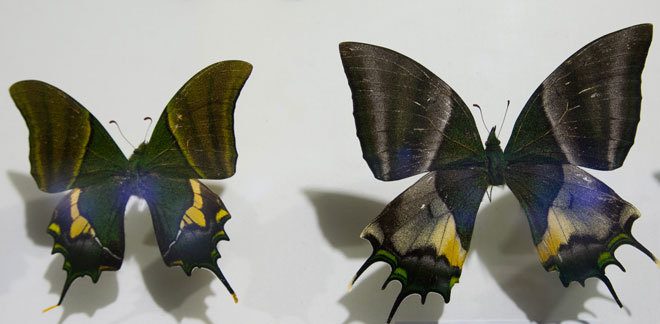
The swordtail butterfly (male on the left, female on the right) was found in Lao Cai. Its scientific name is Teinopalpus imperialis, belonging to the Papilionidae family. The swordtail butterfly is a rare species with a beautiful morphology and high commercial value, often targeted for illegal hunting and trade. It is listed in CITES (the Convention on International Trade in Endangered Species of Wild Fauna and Flora), which prohibits hunting and trading globally; it is also included in the IUCN list and Vietnam’s Red Book.
This butterfly is distributed in Myanmar, Laos, Thailand, China, and Vietnam. In Vietnam, it inhabits high mountainous areas in provinces such as Lao Cai, Cao Bang, Ha Giang, Kon Tum, and Lam Dong. Adult butterflies typically fly over mountain peaks, ridges, or tree canopies along forest trails at altitudes above 2,000 meters in places like Sa Pa (Lao Cai), Phia Oac Peak (Cao Bang), and on Ngoc Linh mountain tops (Kon Tum) at elevations exceeding 2,500 meters.
3. Dry Leaf Butterfly
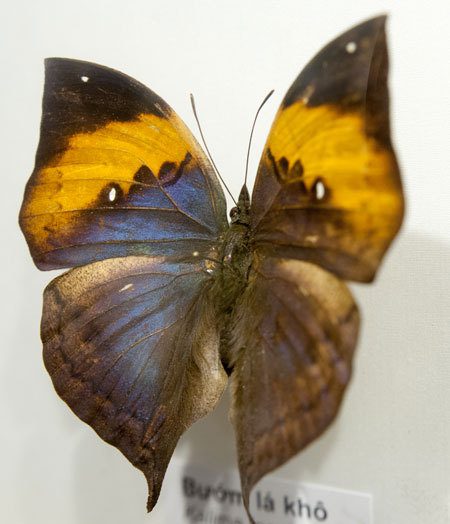
The dry leaf butterfly found in Vinh Phuc has the scientific name Kallima inachus, also known as the orange-striped oak leaf butterfly. This species is quite large and typically flies beneath the forest canopy, where it can easily camouflage itself among the dry leaves.
The dry leaf butterfly is one of the most well-known butterflies globally for its extraordinary camouflage to evade predators. Thus, it serves as a prime example for students studying this trait in biology. It holds significant value in taxonomy and biodiversity.
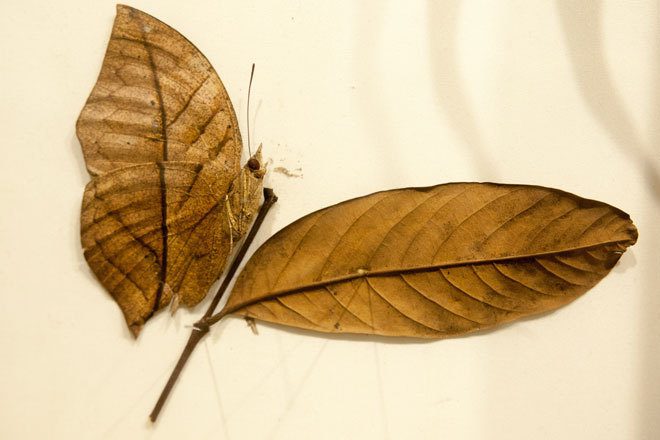
When resting with its wings folded, the underside of the wings resembles a dry leaf. The elongated tail of the hindwings resembles a leaf stem, and a brown line extends to the tip of the forewings, mimicking the main vein of a leaf.
4. Edwad’s Butterfly
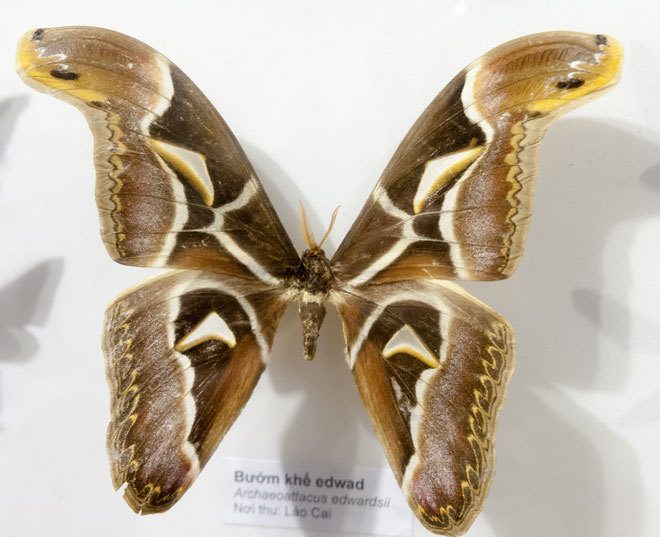
Edwad’s butterfly collected in Lao Cai has the scientific name Archaeoattacus edwardsii, belonging to the Saturniidae family. Edwad’s butterfly is one of the largest moth species in the world, distributed in India, Nepal, Myanmar, Laos, Thailand, Cambodia, Brunei, southern China, and Vietnam. In Vietnam, this species is rare and often hunted and collected.
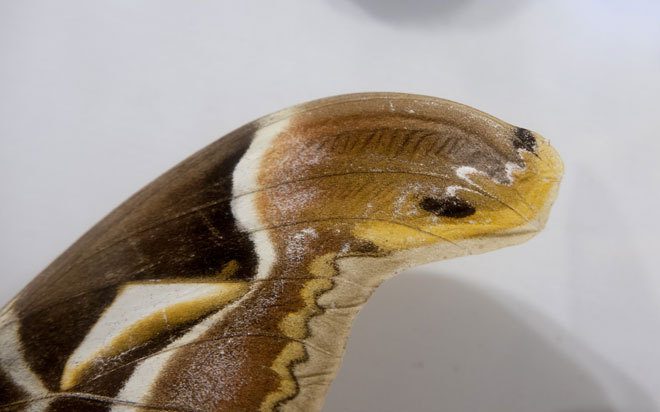
The wings of Edwad’s butterfly are adorned with beautiful patterns, with the apex of the forewings resembling a snake’s head (when the wings are folded) serving to intimidate opponents and protect itself from predators.
5. Brahmin Moth
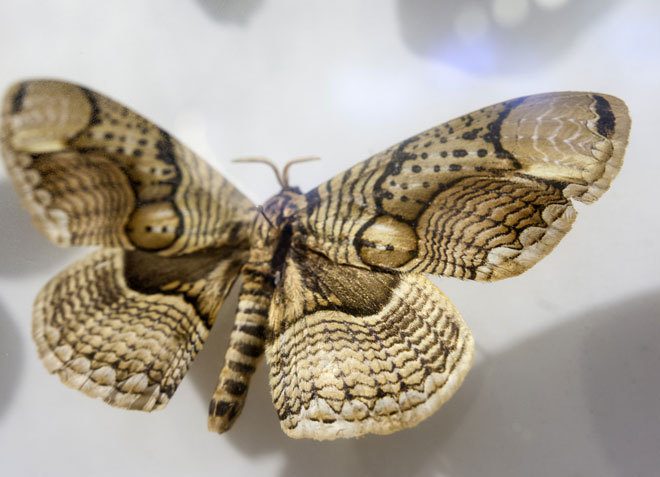
The Brahmin moth, collected in Lao Cai, has the scientific name Brahmaea wallichii Gray, belonging to the Brahmaeidae family. This species is characterized by its beautiful form and large size. The wings are decorated with patterns and designs that serve as camouflage to blend into its forest habitat beneath the tree canopy. The Brahmin moth is found in India, China, Southeast Asia, including Vietnam. This is a rare species valued for its aesthetic and scientific significance, often hunted and collected.
6. Aturus Swallowtail Butterfly
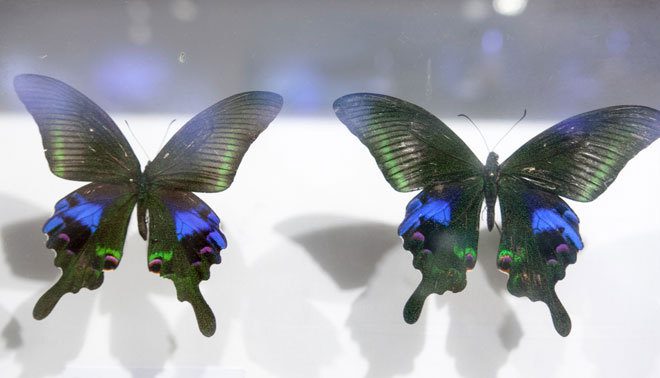
The Aturus swallowtail butterfly, also known as the green peacock butterfly, has the scientific name Papilio arcturus. This large butterfly is often seen in forests and tree canopies. In Vietnam, this species is rare, distributed in the northern and central forest areas. Due to its beautiful morphology, the Aturus swallowtail butterfly is often hunted, leading to habitat loss.
7. Meanas Moon Moth
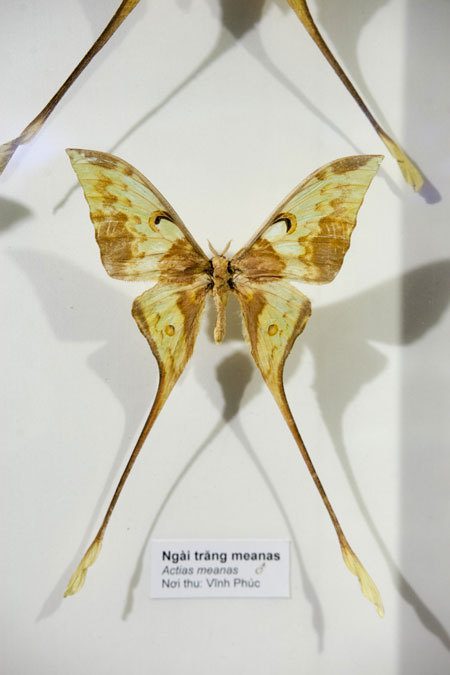
The meanas moon moth, collected in Vinh Phuc, has the scientific name Actias maenas, belonging to the Saturnidae family. It is also known as the Malaysian moon moth. This species is large, with males having very long tails, colored yellow and purple-brown, and beautiful morphology. Females have a green color.
In Vietnam, the meanas moon moth can be found in various localities such as Dak Nong, Lam Dong, Lao Cai, Nghe An, and Vinh Phuc. Additionally, this species is present in many parts of the world, including Malaysia, northern to central India, Nepal, China, Laos, and Thailand. It is valued for its aesthetic beauty and is frequently sought after by collectors.
8. Red-Banded Sharp-Wing Butterfly
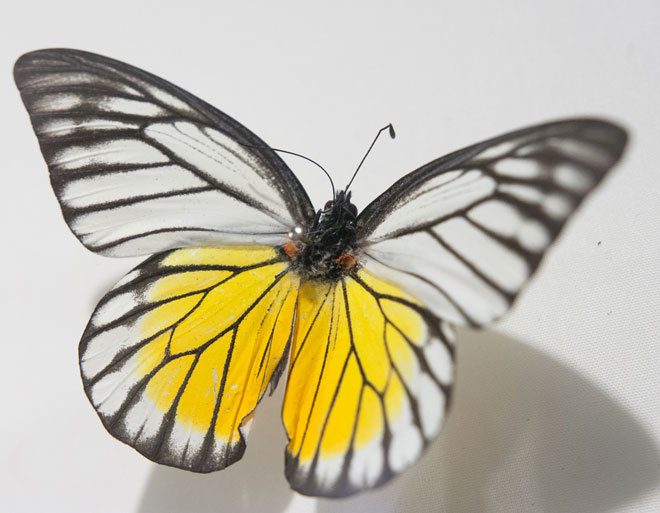
The red-banded sharp-wing butterfly found in Vinh Phuc has the scientific name Prioneris philonome (Boisduval), belonging to the Pieridae family. This species primarily flies in forests, often encountered alone near puddles or damp spots by streams to extract minerals. The butterfly is quite large, with a wingspan of 70-85 mm. The red-banded sharp-wing butterfly is distributed in Sikkim, Myanmar, southern China, Thailand, Laos, and Vietnam.
9. Five-Horned Beetle
In addition, the museum displays many specimens of hard-winged insects, which include the largest number of species in the insect class, diverse in morphology, color, size, and habitat, with over 350,000 species worldwide. Their body size ranges from 0.5 to 200 mm, featuring hardened forewings that protect the membranous hindwings and the upper body. Common and familiar hard-winged insects include stag beetles, scarab beetles, and rhinoceros beetles.
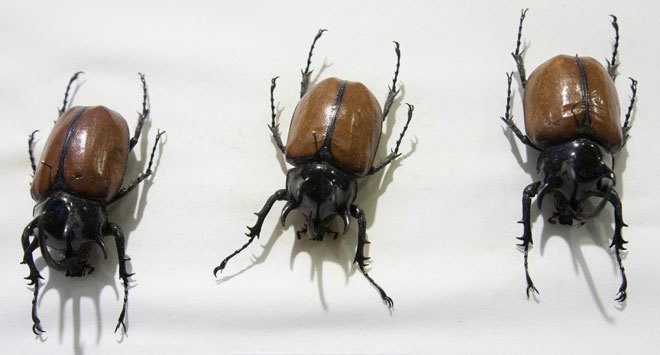
The image shows a five-horned beetle collected in Ha Giang, scientifically named Eupatorus gracilicornis Arrow, belonging to the Scarabaeidae family. This species is large, with males having five sharp horns—one long, curved one on the top of the head, and four shorter ones on the pronotum. These horns serve as decoration and as weapons for males competing for mates. In Vietnam, this species is found in Lao Cai, Cao Bang, Ha Giang, Hoa Binh, and Lam Dong. Due to its large size and unique shape, the five-horned beetle is hunted, traded, and collected. This species is also listed in Vietnam’s Red Book.
10. Flower Crab Spider
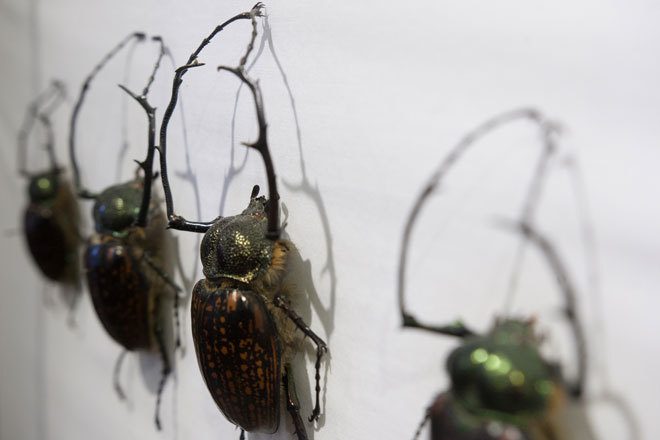
The flower crab beetle, scientifically known as Cheirotonus battareli, belongs to the family Scarabaeidae. This species is one of the largest and most beautifully formed members of the scarab family. Adult males can reach lengths of over 60 mm. The elytra are black, adorned with rows of brown spots along their surfaces. The male’s forelegs are elongated and resemble crab claws, which is why it is commonly referred to as the flower crab beetle. This species is often hunted and traded, and it is listed in the Vietnam Red Data Book. It is not commonly found, with mature individuals flying primarily in June and July in high mountainous regions such as Cao Bằng, Hà Giang, Sa Pa, and Lai Châu.




















































